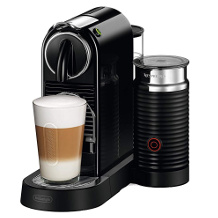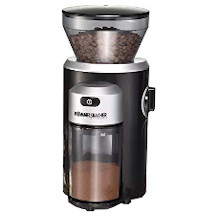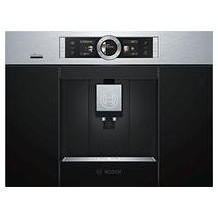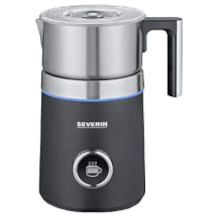Portafilter espresso machine purchasing advice: how to choose the right product
- The most important facts in a nutshell
- A portafilter machine not only produces an aromatic espresso, but also an optimal crema – provided you have mastered the craft.
- The coffee beans used, the grind, the compression of the powder and the crema are primarily responsible for the result.
- In addition to single-circuit and dual-circuit portafilter machines, there are models with dual boiler, thermoblock and hand lever.
- Frequent drinkers, multi-person households and catering establishments benefit from a large water tank.
- If you like to drink your espresso with milk foam, make sure the machine is equipped with a manual hot steam nozzle.
Perfect espresso made by hand
Germans love their coffee: in this country, coffee consumption per capita averages 3.6 cups a day (Tchibo Coffee Report 2019). Whether it’s to wake up in the morning, to digest after a meal or to round off a cosy evening – an espresso is simply a must for many connoisseurs. However, the little black coffee does not taste as good with every coffee machine as it does in your favourite café. It is hard to imagine the catering industry without portafilter machines. But many ambitious gourmets want to enjoy their espresso not only on the go, but also at home.
Choosing the right machine is the first step on the path to becoming a barista – a hobby becomes a passion. In a sense, you bring a touch of Italy into your own four walls. While most other coffee machines do almost everything by themselves, a lot of love and, above all, patience goes into preparing an espresso from a portafilter machine. Such a coffee machine is therefore primarily suitable for regular coffee drinkers who appreciate an espresso of the best quality and are prepared to do it themselves. Those in a hurry are in the wrong place, as some models take ten minutes just to heat up. But good things come to those who wait.
Italy as the cradle of the portafilter machine
Ironically, the history of espresso (translated from Italian: “fast”) began in 1901, when the Italian Luigi Bezzera was looking for a solution to shorten his employees’ coffee breaks. With the idea of extracting the coffee under higher pressure, he managed to minimise the preparation time.
Portafilter machines and the decelerated espresso philosophy
A portafilter is a coffee machine with which you make espresso using high pressure. Unlike a fully automatic coffee machine, you have to grind the coffee yourself and tamp the coffee grounds, i.e. compress them in the sieve with a pestle. While many portafilter machines now heat the water and build up the pressure automatically, others, especially high-quality models, offer numerous options for manual operation. The latter allow fine adjustment of various components. This gives baristas all the freedom they need for their craft.
Genau wie die meisten anderen Kaffeemaschinen bestehen die Siebträgermaschinen aus einem Wasserkreislauf samt Boiler, Pumpe, Dampfhahn und Brüheinheit, auch Brühgruppe genannt. An ebendieser, dem Herzstück der Maschine, findet der namensgebende Siebträger Platz. Die spezielle Brühtechnik holt das Beste aus dem Kaffeepulver heraus und zaubert das Markenzeichen eines hochwertigen Espressos: den feinporigen, aromatischen Schaum, der auch als Crema geläufig ist. Der hohe Brühdruck und die kurze Extraktionszeit sorgen dafür, dass wenig Bitterstoffe mit dem Getränk in der Tasse landen.
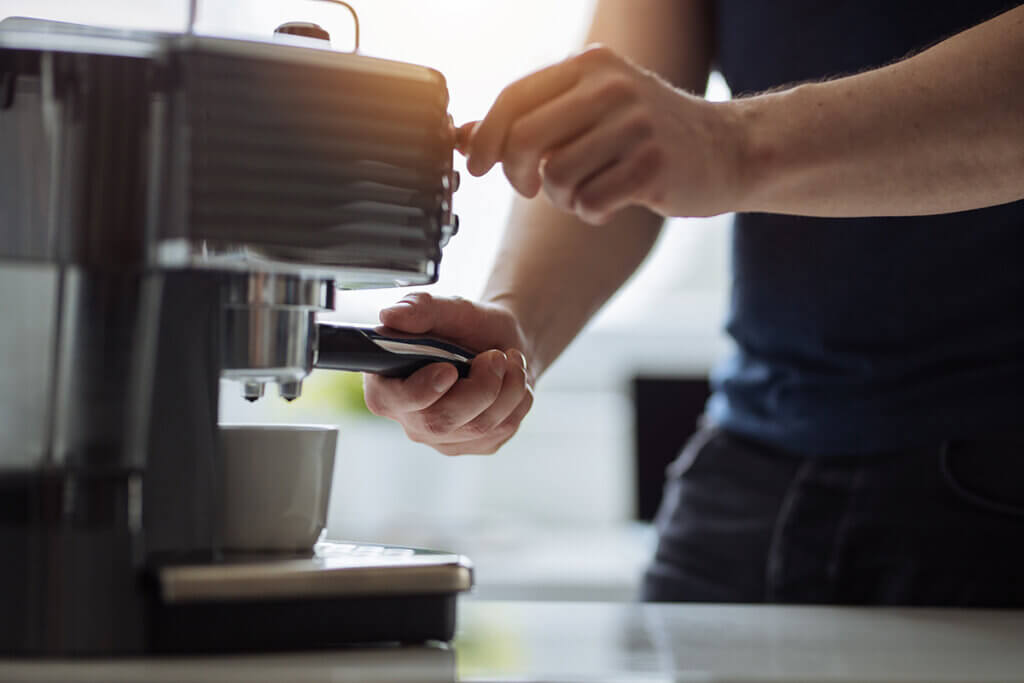
A portafilter machine is the ideal coffee maker for anyone who wants an original Italian espresso. However, lovers of milk-based coffee specialities do not miss out. With many portafilter machines, you can also prepare cappuccino or latte macchiato. No other coffee machine allows you to manually adjust or refine the result so precisely. If you like to have full control over the grind, powder quantity, pump pressure and extraction temperature, a portafilter is the right choice. With it, you can make an espresso just the way you like it.
Put the pressure on: how it works
Sieve portafilter machines work with a removable sieve that you fill with ground coffee and then secure in the machine with a bayonet lock. To distribute the coffee grounds evenly in the sieve and extract the maximum aroma, you first press them together with a tamper, the coffee tamper or also pestle.
The water is heated to 88 to 94 degrees Celsius in a heated boiler and then passed through the espresso grounds at a pressure of 9 to 15 bar. In this way, the powder comes into contact with the water for about 25 seconds. A pressure relief valve (also called an expansion valve) regulates the maximum brewing pressure. Depending on the model, this is generated by an electric pump or a lever. The pump ensures that the water flows through the filter. The quality of the brewing result depends to a large extent on the pump: the more evenly and powerfully the hot water flows through the coffee powder, the better the result – in other words, a concerted beverage crowned by a fine head of foam. The following step-by-step instructions explain exactly how to proceed.
Worthwhile manual work: the operation
A portafilter machine alone does not make a good barista. To convince even the strictest gourmet, a certain amount of know-how is required, as well as a sure instinct. The preparation resembles an artful ceremony. The perfect espresso requires not only the willingness to invest financially, but also in terms of time. Now you have to wait until the machine is completely preheated. Depending on the model, this can take between 10 and 15 minutes. To brew a cup, proceed as follows:
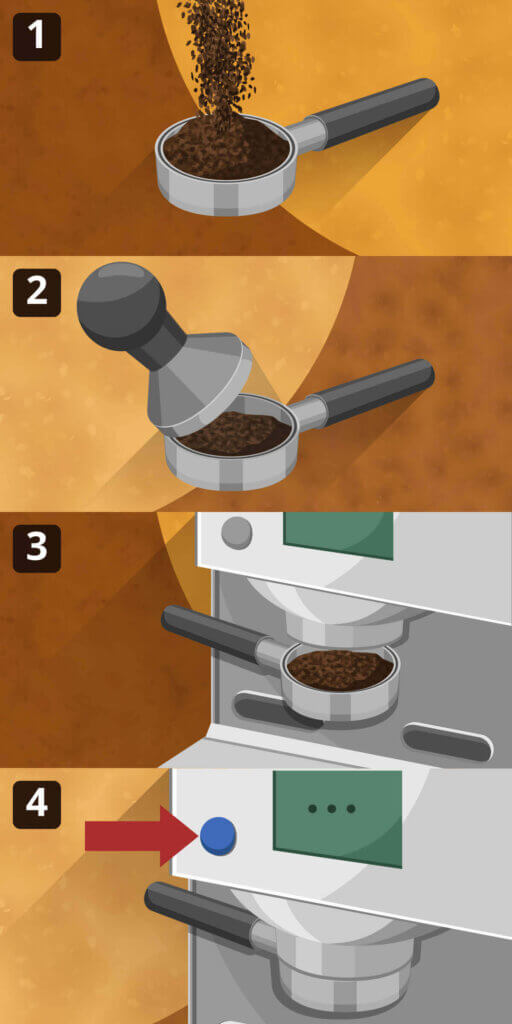
- Fill the coffee grounds into the sieve.
- Press it firmly with a tamper.
- Hang the sieve in the filter holder.
- Activate the pump by pressing the button.
In the end, you will get an aromatic, fragrant cup of espresso. Experiment with the grind, tamping as well as the amount of powder and taste the changes in the result to gradually adjust the aforementioned components.
What exactly is a barista?
Barista is the Italian word for bartender. A barista should be very familiar with the settings of a portafilter machine in order to make the perfect espresso. He sometimes spends years perfecting every move. This makes making coffee a real art.
Four factors for maximum enjoyment
There are several prerequisites for an enjoyable espresso. Only an interplay of various factors guarantees a successful end result.
The coffee
You should be prepared to invest in high-quality espresso beans. After all, their quality and freshness determine the taste. Depending on the variety and roasting, the ratio of bitterness and acidity varies. A basic distinction is made between two types of beans: the fine Arabica and the strong Robusta beans. A stable crema is best achieved when the blend has a Robusta content. While light roasts have a more acidic taste, darker roasts have a more bitter note. Give free rein to your love of experimentation.
The grind
Since only a few machines have an integrated grinder, you will either have to use an external coffee grinder or already ground beans. If you grind the beans immediately before use, the espresso will be particularly aromatic. This is due to the essential oils that quickly evaporate after grinding. How strongly you grind the beans is also important: The finer the powder, the slower the brewing process. This in turn changes the consistency and aroma of the espresso. Start with a medium-fine grind and adjust it in the course of your test.
The compression
As soon as you have put the flour into the sieve, knock once or twice against the sieve holder. This causes it to sink down and distribute itself homogeneously. Then compact the flour with the tamper. You need to be very sensitive here: Depending on the pressure, the water flow rate changes, which in turn affects the taste. If the powder is pressed unevenly or too tightly, the result will be either an over-extracted or less aromatic espresso. This is also noticeable in the crema.
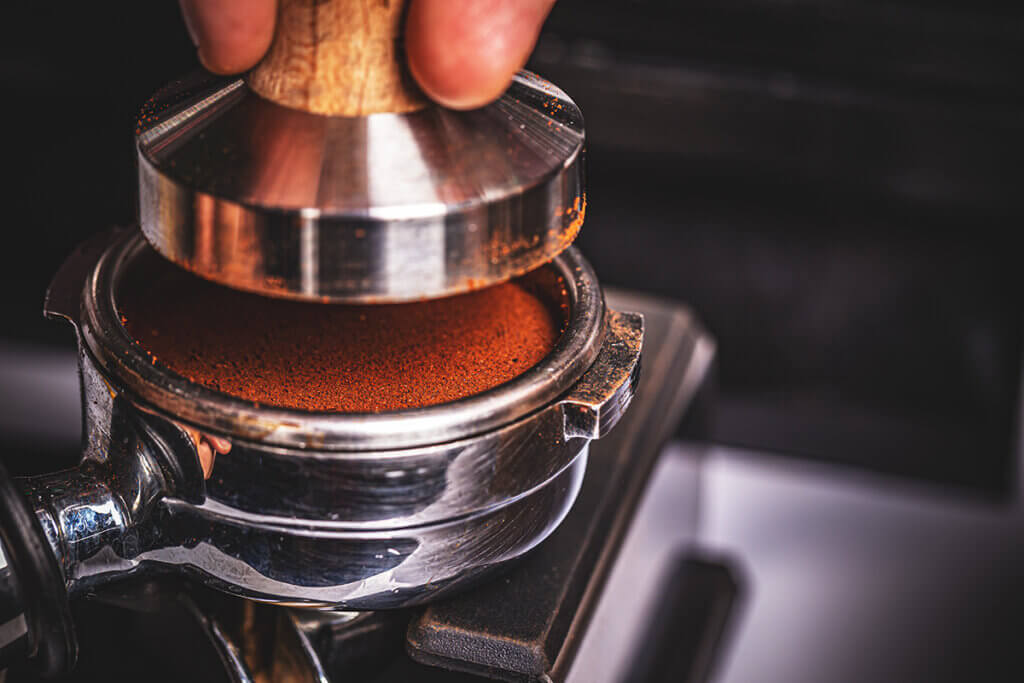
Ideally, you press the powder with a pressure of 10 to 15 kilograms. But here too, try it out a little until you find the optimum density for you.
The crema
The pressure ensures that a crema forms on the surface of the espresso. The crema depends on the temperature, the amount and the consistency. The more stable the brewing temperature, the finer the crema. A so-called crema strainer slows down the flow of water through its counterpressure, which supports the formation of crema. The version for beginners is double-walled and has only a few small holes, while the professional version is a single-walled strainer that fills the entire base. Some machines have a crema valve that opens when a certain pressure is reached. However, the resulting crema is not the actual emulsion of the coffee oils, but a simple, usually tasteless coffee foam. It is therefore sometimes referred to as “fake crema”.
A tip: If you are dissatisfied with the amount of crema, it helps to adjust the grind of the beans. The finer the grind, the more crema.
The most important figures at a glance
For 25 millilitres of espresso, the standard amount of ground coffee is about seven grams. The optimum brewing time is 25 seconds, the ideal water temperature is 88 to 94 degrees Celsius and the perfect brewing pressure is nine bar.
Professional portafilter machines for beginners, gourmets and purists
Professional espresso machines can be divided into five different types, which differ according to how the water is heated and exits the brewing group: single-circuit and dual-circuit espresso machines, espresso machines with dual boilers, as well as models with thermoblocks and hand-lever machines. Each design is suitable for different requirements.
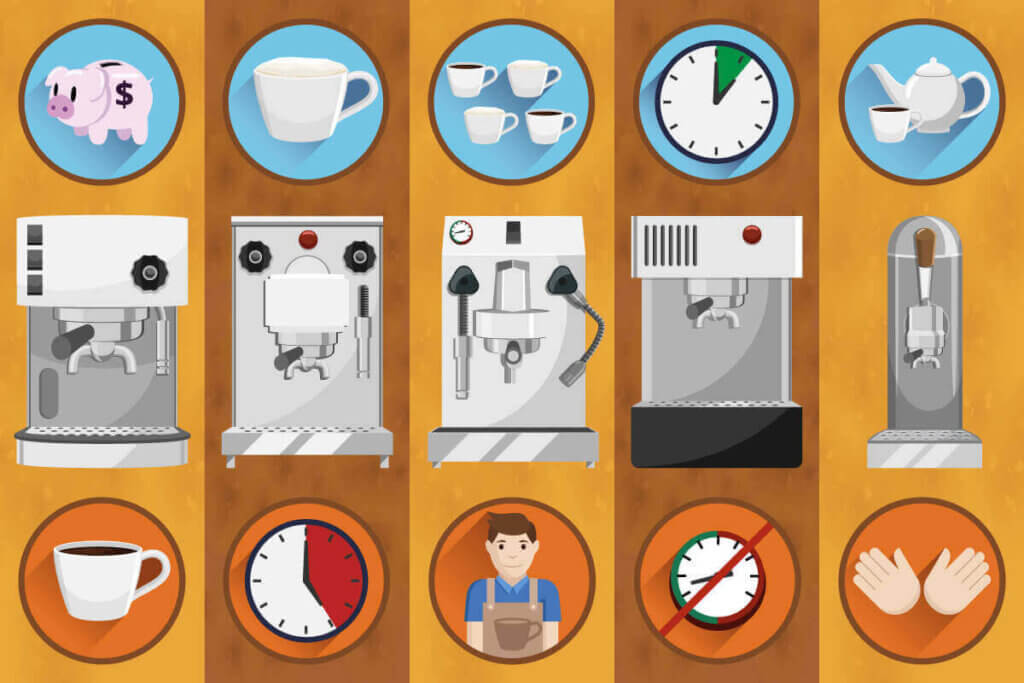
Single-circuit portafilter machines
Single-circuit portafilter machines have a single heating element. The name is due to the fact that the same boiler, i.e. water circuit, is used for preparing the espresso and frothing the milk. However, the two procedures require a different water temperature: while espresso production requires a temperature of between 88 and 94 degrees Celsius, optimum steam is only produced at 110 to 130 degrees Celsius. This means that after the espresso has been drawn, the machine must continue to heat or cool down for the production of milk creations in order to run an espresso through after the finished milk foam. These heating and cooling processes result in waiting times.
However, if you only drink espresso or Americano, you are well advised to use a single-circuit system. Since they are comparatively inexpensive, single-circuit portafilter machines make good entry-level machines. They are also extremely compact and can easily fit even in small kitchens.
Double-circuit portafilter machines
If you prefer to drink your espresso with milk foam, a dual-circuit system is recommended. With dual-circuit portafilter machines, it is possible to extract espresso and froth milk at the same time. So there are two water circuits with different temperatures, but also only one boiler with a water temperature between 110 and 130 degrees Celsius. A pipe runs through the boiler to supply the brewing circuit with hot water. This so-called heat exchanger ensures that the water reaches the necessary temperature of 88 to 94 degrees Celsius. To reach the target temperature, the flow time must be precisely adjusted.
Compared to the single-circuit system, this technology takes longer to heat up. On the other hand, there is no waiting time between espresso preparation and milk frothing. In addition, dual-circuit machines can be connected directly to the water supply, so you do not need to fill a water tank. However, these models are usually much more expensive than their single-circuit counterparts. So the decision between single- and dual-circuit machines is also a trade-off between cost and convenience.
The weak point
After a while at a standstill, the water in the brewing circuit takes on the boiler temperature, which is clearly too hot for espresso. It is therefore advisable to drain the water before the next espresso until it no longer comes out of the brew group as steam. This is also referred to as an empty draw. If you drain this directly into the cup that you will use for the espresso afterwards, you can preheat your cup.
Single-jet machines with dual-boiler technology
Brewers with dual boiler technology work with two independently temperature-controlled boilers that ensure that the water temperature remains constant. Similar to a dual-circuit machine, one boiler is responsible for building up the pressure for the espresso draw, while the second supplies the steam for the milk froth – with the difference that there is neither a waiting time nor an overheating problem. While you have to let the dual-circuit espresso machines cool down first after an empty period, the models with dual boilers are ready for use again immediately. However, depending on the intensity of use, the water remains in the respective boiler for a relatively long time. With each additional heating, the water quality suffers. Therefore, it is important to match the boiler size with the individual usage pattern.
The easy intervention in the temperature control makes portafilters with dual boiler technology an ideal fine tool for professional baristas and perfectionists. For this reason – together with the temperature consistency – dual-boiler machines are often found in cafés and restaurants. In the catering trade, there is also less of a problem with the water remaining unused for too long. However, espresso machines with dual-boiler technology tend to be in the upper price segment.
Professional espresso machines with thermoblock
In contrast to the types considered so far, the thermoblock variant does not include a boiler. Instead, the water is fed directly into an electronic flow heater and then conveyed by a vibration pump. This process shortens the waiting time for the right temperature, so you can prepare your espresso just one or two minutes after switching it on.
When you have to be quick in the morning, the thermoblock machine comes in handy. What’s more, it is extremely affordable. However, you have to do without a brewing pressure control. The brewing temperature depends on the flow rate. If the water flows through the coffee powder too quickly, it will not be hot enough. If, on the other hand, it flows too slowly, it will get too hot, causing the espresso to burn. These machines are also only suitable to a limited extent for frothing milk, as the steam is usually too moist.
Hand-lever machines
Hand-lever machines spread the flair of a traditional espresso connoisseur in the kitchen. When it comes to design, these classic pieces of art are always a winner. With these purist machines, you still have to do it yourself – or, to be more precise, press the hand lever down to let the obligatory pressure build up. Since the water cools down quickly during the first espresso draw, it is advisable to make an empty draw before the next one. But be careful: if you make several consecutive passes, you may overheat. Moreover, with this “diva” among the portafilter machines, you have to pay even more attention to the grind and the dosage than with other espresso machines, because it is not forgiving.
The mechanical process requires a lot of patience and seems unnecessarily complicated from today’s perspective. However, if you know what you are doing, you can get top performance out of your machines. Connoisseurs are particularly impressed by the taste quality of the end result, which can be varied in numerous nuances. Of course, this comes at a price, not only in terms of time and muscle power, but also in terms of acquisition costs. In contrast to the automatically operated appliances, which tend to be rather bulky, the hand-lever machines impress with their slim design. The disadvantage: since the water tank is very small, you have to refill it frequently, which is not exactly practical in a larger society.
Hybrid machines: The happy medium?
Hybrid machines are a combination of two principles: A portafilter and a fully automatic coffee machine. While they are as easy to operate as a fully automatic machine, they produce real espresso. Since a coffee grinder is already integrated, there is no need for an additional purchase. The milk foam is also usually prepared automatically. Ultimately, however, they are compromise devices, because you will be looking for individual setting options here for a long time. For frequent drinkers who can put up with this, hybrid models are nevertheless worthwhile.
What matters when buying
The choice of a portafilter machine depends, among other things, on your preferred area of use, your personal taste requirements and your willingness to devote yourself. Accordingly, occasional users, ambitious home baristas and gastronomy operators must each give higher weight to other factors. These include the temperature in the boiler, the production capacity, the pump pressure and the steam output, but also the budget and the additional features.
Things are heating up: the boiler temperature
Since the boilers are responsible for heating the water, be it for the brewing process or the steam, they have a decisive influence on the performance of the machine. So make sure they are made of a high-quality material, ideally steel or brass. Cheaper and thinner versions made of aluminium sometimes bring a metallic aftertaste to the water. In addition, kettles with a thicker outer wall can maintain the water temperature for longer. Small kettles are practical in that they heat up faster and are ready for use sooner. On the other hand, they are more susceptible to temperature fluctuations. Large boilers also provide higher capacities.
If the temperature is too low, the espresso tastes too weak or watery; if the temperature is too high, it tastes extremely strong or even burnt. Ideally, the machine is equipped with automatic temperature stabilisation, or PID for short (“Proportional-Integral-Derivative”). It ensures that the brewing temperature remains constant. As soon as it senses a temperature change, the machine heats up against it. This is the only way to ensure perfect extraction and thus ideal coffee enjoyment.
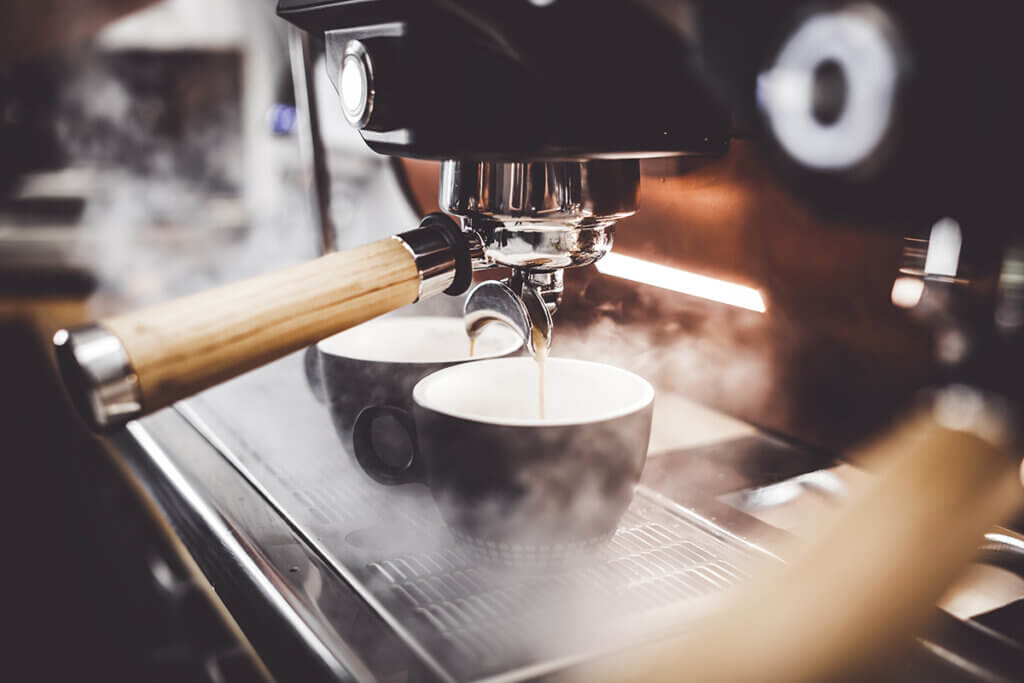
Water march: The production capacity
The capacity of the water tank is between one and two litres. If you don’t want to refill it constantly but like to make several cups at once, you should opt for a large water tank that holds at least 1.5 litres. However, this requires more space. In addition, the tank should be removable for uncomplicated filling and easy cleaning. If you use the machine several times a day or for your catering business, a fixed water connection is worthwhile.
The number of cups plays a decisive role in the purchase. Your decision depends on whether you regularly make espresso just for yourself, for your family or for the entire staff. Hand-lever or single-circuit portafilter machines are designed more for making smaller quantities of coffee. Although they produce one to two cups per brewing process, like the other portafilter variants, they require a certain amount of rest after each run. Dual-circuit portafilter machines and models with a dual-boiler system, on the other hand, can draw several cups in succession more quickly.
In bar: The pump pressure
The motto “more is better” does not apply to the pump pressure. What is important is that the machine can produce the necessary 9 bar. The right pressure is not only important to obtain a full-bodied aroma in the espresso, but also to achieve an optimal crema. However, if you value a certain amount of leeway when making espresso, you should go for a machine that can build up a pressure of up to 15 bar. But be careful: the higher the pressure, the finer the grind of the espresso powder should be.
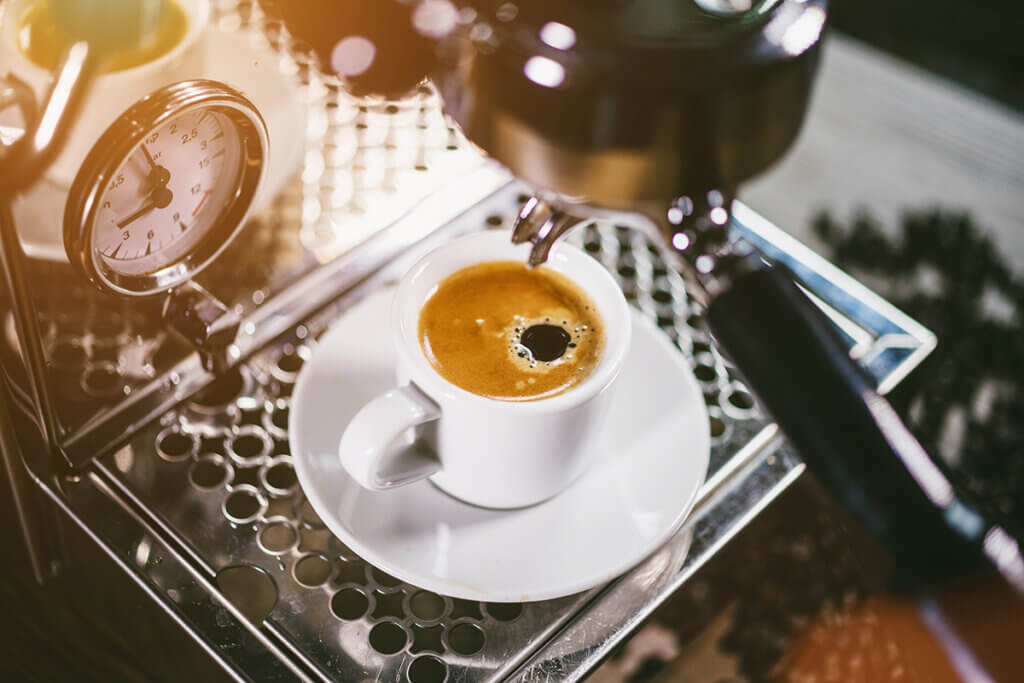
Release steam: The power of the milk frother
A strong steam is crucial for a successful milk froth. The higher the power, the more pressure the machine can produce. Almost every portafilter has a steam lance with which you can prepare milk foam. To do this, you hold a separate container filled with (cold) milk to the lance, from which steam emerges. It takes a little practice to get a fine-pored, fluffy milk foam.
A question of price?
Entry-level models for 100 to 150 euros are the right choice for anyone who wants to get to grips with Italian espresso culture for the first time and doesn’t want to dig too deep into their pockets to do so. To make preparation as easy as possible for beginners, these machines have an automated brewing process and a milk foam system. You therefore do not need to make individual settings. The rather small machines are suitable for only one or two cups of espresso in one go. Moreover, most of these are single-circuit systems.
If you want not only freedom in the settings, but also better technology including a double water circuit, you will only find what you are looking for in the mid-range, which starts at around 300 euros. The higher the quality of the material and workmanship, the more expensive the appliance. From 500 euros, the premium range begins with high-performance appliances that are also used in the catering industry. This price segment also includes hand-lever machines that will make every barista’s heart beat faster.
Extras for coffee enthusiasts and comfort lovers
Operating a portafilter should be as easy as possible. Additional features are not only a must for experimentation enthusiasts. Anyone who places a high value on comfort will also get their money’s worth with these extras:
- Integrated grinder: Although a built-in coffee grinder saves you work and costs, the constant heating of the beans results in a loss of quality.
- Milk frother: If you prefer your espresso with milk froth, you should opt for a machine with a hot steam nozzle.
- Heated cup tray: A cup warmer ensures that your espresso stays at a pleasant drinking temperature.
- Automatic switch-off: The stand-by mode switches the machine off automatically when it has not been used for a certain time. This saves you electricity.
- Hot water spout: With a separate spout, you get hot water for your tea.
Cleanliness as the top priority
The dirt that accumulates in the portafilter over time is not only unhygienic, but also quickly becomes rancid due to the oil contained in the coffee beans. Therefore, it is essential to clean all removable parts regularly. There is plenty of room for dirt and coffee residue under the sieve. This can have a negative effect on the taste. Ideally, clean the portafilter after every espresso cup and dry it afterwards. Remove any dirt from the brew group with a brush. Finally, briefly run hot water through the brew group. Do not forget to rinse the steam lance with steam. Wipe off any milk foam residue with a damp cloth. Before refilling with water, you should also wash out the container.
The coffee powder only comes into contact with water in the portafilter, which keeps the inside of the machine clean in the long term. Therefore, in contrast to fully automatic coffee machines, portafilter machines can do without fully automatic cleaning programmes. However, since water is involved, there is no way around regular descaling. The intervals depend on the hardness of the tap water and the intensity of use. In most cases, it is sufficient to descale the machine every three months. To do this, pour the descaler into the water tank, observing the appropriate soaking time. The exact procedure varies depending on the design of the machine. Some models guide you through the process with illuminated buttons. In any case, follow the operating instructions.

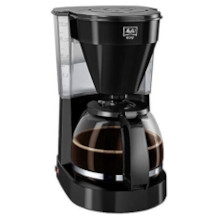
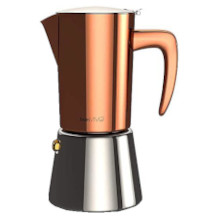
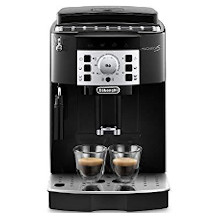
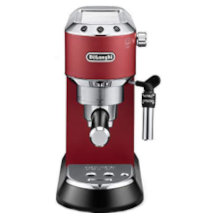
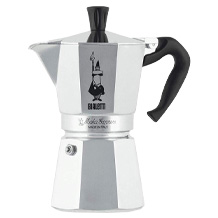
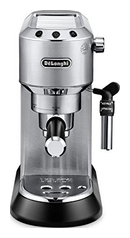
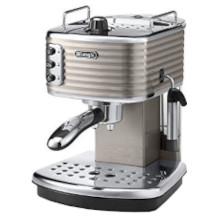






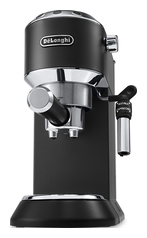
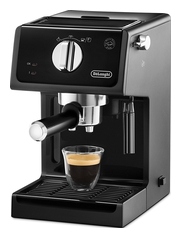

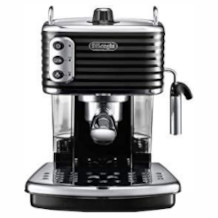

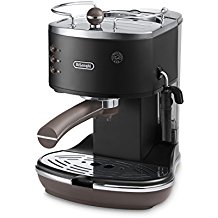
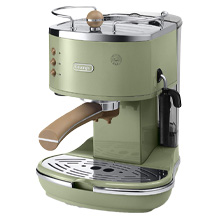
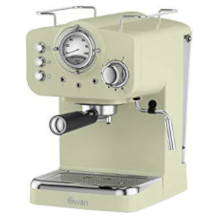

 23,118 reviews
23,118 reviews


